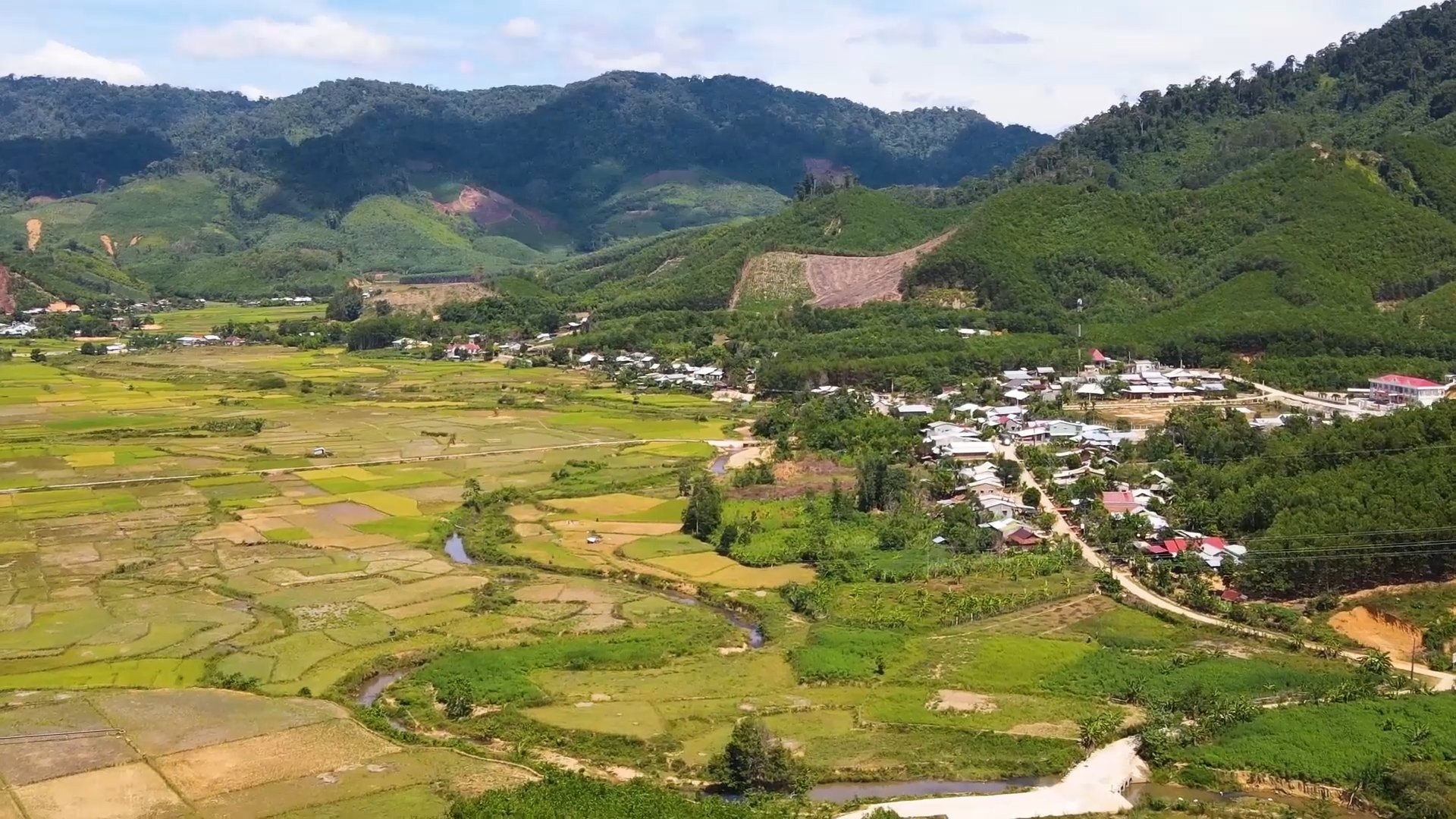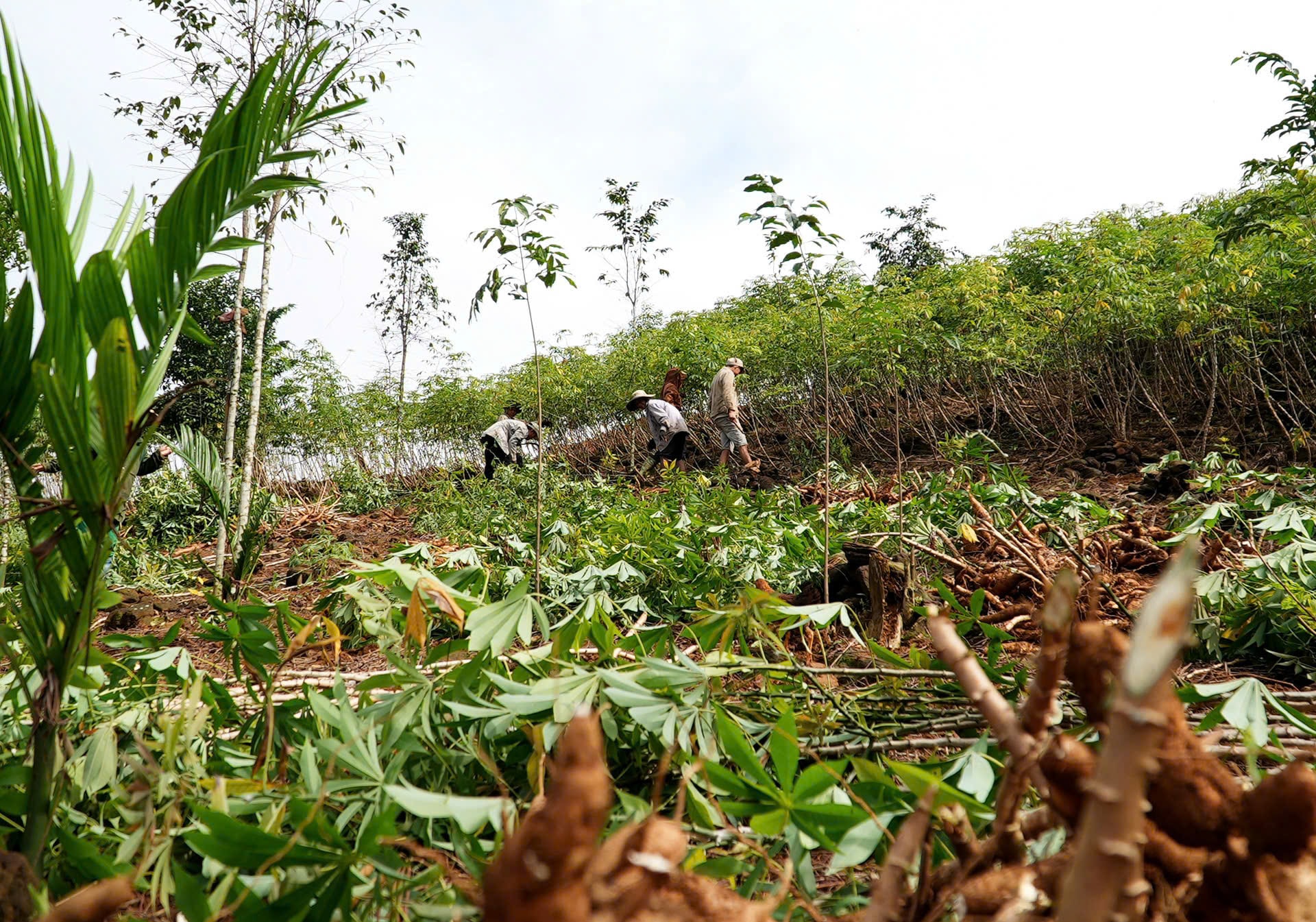
Additional tasks and solutions
Based on the comments of cadres, party members and people of all walks of life on prioritizing investment in resources for development in the west of the city, the Political Report submitted to the 1st Congress of the City Party Committee added the sixth group of tasks and solutions: "Promoting potentials, advantages and increasing investment in resources for socio -economic development in mountainous areas, narrowing the gap with the plain areas".
Accordingly, in the 2025 - 2030 term, the City Party Committee's Action Program on socio-economic development, ensuring national defense and security in mountainous areas for the 2026 - 2030 period will be issued. The city will focus resources on building and effectively implementing mechanisms and policies to support businesses and people to create momentum for mountainous development.
Review and complete land use planning (residential land, production land, tourism land) to pilot the construction of concentrated residential areas, small industrial clusters associated with specialized production areas and community tourism development; prioritize investment in population arrangement associated with production stabilization, eco-tourism development, climate change response, natural disaster and landslide prevention, and long-term stabilization of people's lives.
Increase investment in developing infrastructure for transport, healthcare, education, information technology, and telecommunications in mountainous areas...
In the period of 2025 - 2030, the City Party Committee emphasized the need to strengthen the role and responsibility of local Party committees and authorities in leadership and direction, associated with promoting the spirit of self-reliance, effectively implementing national target programs on poverty reduction and sustainable social security, socio-economic development in ethnic minority and mountainous areas; preserving and promoting traditional values and cultural identities associated with improving the quality of life of ethnic minorities...
According to Deputy Secretary of the City Party Committee Ngo Xuan Thang, prioritizing investment resources for mountainous areas and gradually narrowing the development gap between the western and eastern areas of the city is of great concern to the Standing Committee of the City Party Committee. Because the closer this gap is, the more it affirms the operational effectiveness of the 2-level local government model.
Mountainous traffic must continue to be invested in smoothly, connecting trade; there must be solutions to overcome power outages in the afternoon when it rains to solve work for people. The city must soon have new policies for education and health care in this area.
Health stations in mountainous communes need to be invested in to become satellite hospitals of the city with fundamental policies to attract human resources, equip facilities to ensure medical examination and treatment services for people, reduce pressure on the city center's infrastructure...

Proposal to develop specific policies
It can be seen that the midland and mountainous areas of Da Nang city have great potential in terms of natural resources, culture and geostrategic location, but the exploitation and promotion are still limited. Many localities have organized tours to learn from development models in other places, but the application to practical conditions is still limited and has not achieved the desired results.
Many economic development models are still at the experimental stage, failing to promote diffusion and create specific socio-economic products with competitiveness and strength for the economy. This leads to fragmentation, lack of cohesion, and failure to create a common value chain and development momentum for the entire region.
Mr. Dang Tan Phuong, Deputy Director of the Department of Ethnic Minorities and Religions, said that investment resources for the region are still scattered, mainly relying on the state budget, while the mobilization of socialized resources has not achieved results. Regional linkages between localities in the region and neighboring localities are not really tight, lacking specific coordination mechanisms, leading to difficulties in forming product value chains and sustainable development models.
“In the new period, the city needs to develop specific mechanisms and policies to mobilize and allocate investment resources reasonably for socio-economic infrastructure. Support investment in connecting transport infrastructure to attract businesses to invest in mountainous areas to solve local employment, increase income, and stabilize people's lives.
"Planning concentrated inter-commune raw material areas to build economic development models according to the chain linking from production - processing - product consumption to replicate according to the "3 together" mechanism between the state, people and businesses," Mr. Phuong proposed.
For Tra Linh commune, one of the important goals by 2030, the Commune Party Committee strives to build Tra Linh into a key medicinal plant industrial center of Da Nang city and the Central Highlands region, with Ngoc Linh ginseng as the main crop.
Ms. Ho Thi Minh Thuan, Secretary of the Tra Linh Commune Party Committee, said the city needs to issue priority policies and special mechanisms for mountainous areas in investing in infrastructure, transportation systems, and attracting businesses to develop the medicinal industry.
"The issuance of policies, plans and investment projects for socio-economic development in mountainous areas should be concise in procedures and easy to implement for beneficiaries," said Ms. Thuan.
Source: https://baodanang.vn/tro-luc-tu-chinh-sach-no-luc-rut-ngan-chenh-lech-vung-3302926.html


![[Photo] General Secretary To Lam receives US Ambassador to Vietnam Marc Knapper](https://vphoto.vietnam.vn/thumb/1200x675/vietnam/resource/IMAGE/2025/9/29/c8fd0761aa184da7814aee57d87c49b3)
![[Photo] Many streets in Hanoi were flooded due to the effects of storm Bualoi](https://vphoto.vietnam.vn/thumb/1200x675/vietnam/resource/IMAGE/2025/9/29/18b658aa0fa2495c927ade4bbe0096df)
![[Photo] General Secretary To Lam attends the ceremony to celebrate the 80th anniversary of the post and telecommunications sector and the 66th anniversary of the science and technology sector.](https://vphoto.vietnam.vn/thumb/1200x675/vietnam/resource/IMAGE/2025/9/29/8e86b39b8fe44121a2b14a031f4cef46)


![[Photo] National Assembly Chairman Tran Thanh Man chairs the 8th Conference of full-time National Assembly deputies](https://vphoto.vietnam.vn/thumb/1200x675/vietnam/resource/IMAGE/2025/9/29/2c21459bc38d44ffaacd679ab9a0477c)








![[Infographics] Time, location, content of the 1st Congress of An Giang Provincial Party Committee, term 2025 - 2030](https://vphoto.vietnam.vn/thumb/402x226/vietnam/resource/IMAGE/2025/9/30/fed466586ad84c3ebea914be993018ca)























































































Comment (0)